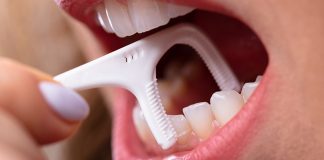Diseases that can cost life are the ones that need to be prevented before occurring. Just a healthy lifestyle and nutritious food cannot promise you good health; regular body examination helps you to be confident about your body. By saying so you needn’t be ringing the hospital bell for every single problem that your body faces. Checking your health at regular intervals is all you need to do.
Your regular annual health checkups are good practice but ensure that your health checklist has a place for the following gynecological examinations.
Pelvic exam
Ensuring your gynecological health as you age is very important. Women of reproductive age should visit the doctor if they have symptoms such as unusual vaginal discharge or pelvic pain. Pelvic inflammatory disease (PID) is a commonly seen reproductive health issue in women and can occur without exhibiting any signs. Hence regular checkups only can detect any abnormalities.
A pelvic exam is done to find signs of ovarian cysts, sexually transmitted infections, early-stage cancer, genital warts, and abnormal discharge. Since the pelvic exam is a physical test you need to include as a part of your regular checkup.
Pap test
Girls of age below 20 or early ’20s needn’t be worried about cervical diseases or cervical cancer. Women of age 30 and above remain at risk. Though HPV is the main cause of cervical cancer, women of reproductive age must take up this test every three years.
Women who have had their cervix removed during hysterectomy or women above 65 years are at a low risk of getting cervical cancer. Routine Pap smear tests in their cases may not be useful, so they can stop taking Pap smear.
This screening procedure is done by taking cells from your cervix and checked for symptoms of cervical cancer. Pap test finds precancerous or cancerous cell growth in the cervix and if the test results are positive it could be cancer, but not necessarily. You might be asked to take further tests to examine the abnormal cells.
Clinical breast exam and mammogram
Stats about breast cancer are disturbing and alarming. Breast cancer is the second leading cause of death in women. One in thirty-eight women dies due to breast cancer. When the occurrence of breast cancer is in high stakes, it’s very important to prevent it.
Breast cancer gives certain symptoms like skin dimpling, nipple discharge lumps on the breast. If you find any abnormal changes or experience any of the symptoms you need to visit your doctor at the earliest. Ignoring those signs can cost your life. Breast cancer sometimes might occur without any symptoms, such cases Mammogram can help you detect cancer.
A mammogram is a screening tool to detect breast cancer in women experiencing no symptoms. If you under mammogram at regular intervals (at least annually) you can identify the occurrence of cancer even before clinical signs are noticeable. Doctors always recommend women of age 40 and above to regularly examine their breasts by themselves or to undergo a clinical breast exam to reduce the risk of breast cancer.
Bone mineral density test
If you are in your late 30’s its time to give your tirelessly working bones a little test. You might feel that your bones are very strong and healthy but internally they consist of tissues which regularly breaks and rebuilds. As you age this process of rebuilding is little slow and your bones become weak. This is a part of your system and nothing alien!
Once you feel symptoms like joint pains, severe pain at the back, hip, neck, wrist and discomfort while moving swiftly, you must understand your bones are becoming fragile. This eventually can lead to osteoporosis.
Taking up a bone mineral density test is essential.This test will educate you about your bone mineral (calcium) density so that you can take necessary medications to prevent osteoporosis. As bone mineral density test is a simple x-ray imaging process and it won’t cause pain or take long time.





















